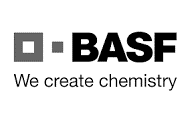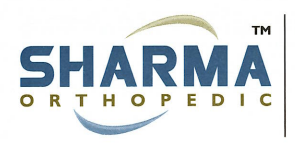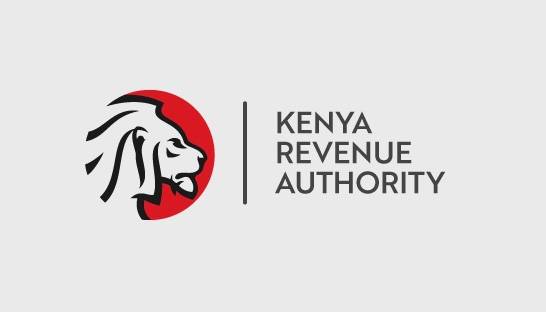This Notice of objection is in response to our letter Ref: xxxxxxx of 5th May 2022 and the KRA response Ref:xxxxxxxx of 13th May 2022. KRA stated that we should apply a value of 1.2USD per Kg for the item. The Valuation Rule applied by KRA is Method 2, which is the value of identical goods.
17th May 2022
The Commissioner, Customs and Border Control
Kenya Revenue Authority
Times Towers
Nairobi
Dear Madam,
REF: Objection to Valuation of Aluminium Galvanised Steel Coils
This Notice of objection is in response to our letter Ref: xxxxxxx of 5th May 2022 and the KRA response Ref:xxxxxxxx of 13th May 2022. KRA stated that we should apply a value of 1.2USD per Kg for the item. The Valuation Rule applied by KRA is Method 2, which is the value of identical goods.
We are writing to object to the proposed, valuation of Aluminium Zinc Galvanised Steel Coils imported vide Entry Number xxxxxxxx of 27th April 2022 as per section 229 of EACCMA, an extract of which is quoted below for ease of reference .
We will also be requesting for the release of the consignment as per sections 106, 122(3) 229(6), of the EACCMA, extracted below for ease of reference
Section 229 of EACCMA
- (1) A person directly affected by the decision or omission of the Commissioner or any other officer on matters relating to Customs shall within thirty days of the date of the decision or omission lodge an application for review of that decision or omission.
(2) The application referred to under subsection (1) shall be lodged with the Commissioner in writing stating the grounds upon which it is lodged.
Section 106 of EACCMA
- The Commissioner may require any person to give security for the due compliance by that person with this Act and generally for the protection of the Customs revenue; and, pending the giving of such security in relation to any goods subject to Customs control, the Commissioner may refuse to permit delivery or exportation of such goods or to pass any entry in relation thereto.
Section 122(3) of EACCMA
122(3) Where, in the course of determining the customs value of imported goods, it becomes necessary for the Customs to delay the final determination of such customs value, the delivery of the goods shall, at the request of the importer be made:
Provided that before granting such permission, the proper officer may require the importer to provide sufficient guarantee in the form of a surety, a deposit or some other appropriate security as the proper officer may determine, to secure the ultimate payment of customs duties for which the goods may be liable.
Section 229(6) of EACCMA
229(6) During the pendency of an application lodged under this section the Commissioner may at the request of the person lodging the application release any goods in respect of which the application has been lodged to that person upon payment of duty as determined by the Commissioner or provision of sufficient security for the duty and for any penalty that may be payable as determined by the Commissioner.
EXTRACTS FROM THE 4TH SCHEDULE OF EACCMA AND WCO ARTICLES OF VALUATION, RELEVANT TO THIS OBJECTION
“Identical goods” means goods which are same in all respects, including physical characteristics, quality, and reputation. Minor differences in appearance shall not preclude goods otherwise conforming to the definition from being regarded as identical.
(2) For the purposes of this Schedule—
(a) goods shall not be regarded as “identical goods” or “similar goods” unless they were produced in the same country as the goods being valued.
(b) goods produced by different persons shall be taken into account only when there are no identical goods or similar goods, as the case may be, produced by the same person as the goods being valued.
TRANSACTION VALUE OF IDENTICAL GOODS(EACCMA)
- (1) (a) Where the customs value of the imported goods cannot be determined under the
provisions of paragraph 2, the customs value shall be the transaction value of identical goods sold for export to the Partner State and exported at or about the same time as the goods being valued:
(b) In applying the provisions of this paragraph, the transaction value of identical goods in a sale at the same commercial level and in substantially the same quantity as the goods being valued shall be used to determine the customs value and where no such sale is found, the transaction value of identical goods sold at the different commercial level or in different quantities, adjusted to take
account of differences attributable to commercial level or to quantity, shall be used, provided that such adjustments can be made on the basis of demonstrated evidence which clearly establishes the reasonableness and accuracy of the adjustment, whether the adjustment leads to an increase or decrease in the value.
(3) Where in applying the provisions of this paragraph, more than one transaction value of identical goods is found, the lowest such value shall be used to determine the customs value of the imported goods.
Note to Paragraph3(EACCMA)
- In applying paragraph 3, the proper officer shall wherever possible, use a sale of identical goods at the same commercial level and in substantially the same quantities as the goods being valued. Where no such sale is found, a sale of identical goods that takes place under any one of the following three conditions may be used:
(a) a sale at the same commercial level but in different quantities.
(b) a sale at a different commercial level but in substantially the same quantities; or
(c) a sale at a different commercial level and in different quantities
Article 2 of the WCO Rules of Valuation
- (a) If the customs value of the imported goods cannot be determined under the provisions of Article 1, the customs value shall be the transaction value of identical goods sold for export to the same country of importation and exported at or about the same time as the goods being valued.
(b) In applying this Article, the transaction value of identical goods in a sale at the same commercial level and in substantially the same quantity as the goods being valued shall be used to determine the customs value. Where no such sale is found, the transaction value of identical goods sold at a different commercial level and/or in different quantities, adjusted to take account of differences attributable to commercial level and/or to quantity, shall be used, provided that such adjustments can be made on the basis of demonstrated evidence which clearly establishes the reasonableness and accuracy of the adjustment, whether the adjustment leads to an increase or a decrease in the value.
- If, in applying this Article, more than one transaction value of identical goods is found, the lowest such value shall be used to determine the customs value of the imported goods.
Article 7 of the WCO Rules of Valuation
- If the customs value of the imported goods cannot be determined under the provisions of Articles 1 through 6, inclusive, the customs value shall be determined using reasonable means consistent with the principles and general provisions of this Agreement and of Article VII of GATT 1994 and on the basis of data available in the country of importation.
- No customs value shall be determined under the provisions of this Article on the basis of :
(a) the selling price in the country of importation of goods produced in such country.
(b) a system which provides for the acceptance for customs purposes of the higher of two alternative values.
(c) the price of goods on the domestic market of the country of exportation.
(d) the cost of production other than computed values which have been determined for identical or similar goods in accordance with the provisions of Article 6;
(e) the price of the goods for export to a country other than the country of importation.
(f) minimum customs values; or
(g) arbitrary or fictitious values.
Article 16 of the WCO Rules of Valuation
Upon written request, the importer shall have the right to an explanation in writing from the customs administration of the country of importation as to how the customs value of the importer’s goods was determined.
Please take note of the definition of Identical and Similar Goods, because it is very important in the determination of which imports should be used to determine a value for the Aluminium Galvanised Steel Coils
(a)Identical goods: means goods which are same in all respects, including physical characteristics, quality, and reputation. Minor differences in appearance shall not preclude goods otherwise conforming to the definition from being regarded as identical.
(b)Similar goods means goods which, although not alike in all respects, have like characteristics and like component materials which enable them to perform the same functions and to be commercially interchangeable. The quality of the goods, their reputation and the existence of a trademark are among the factors to be considered in determining whether goods are similar.
(c) Goods shall not be regarded as identical goods or similar goods unless they were produced in the same country as the goods being valued.
(d) Goods produced by different persons shall be considered only when there are no identical goods or similar goods, as the case may be, produced by the same person as the goods being valued.
Please take note of our interpretation of the WCO Rules of Valuation:
Article 1:The Transaction value forms the basis of the customs value with additions of Article 8
Article 2&3: The period of consideration when considering values of identical or similar imported goods should be 90 days
Article 2&3: The country of origin for any imported goods used for value comparison should be China
Article 7: KRA should not consider, the higher of two values during customs value determination.
Article 7: KRA should not consider the price of goods on the domestic market of the country of exportation;(Market values in China)
Article 7: KRA should not consider a set of Minimum Values in the determination of the Transaction value
Article 7: KRA should not consider arbitrary values in the determination of values.
Article 2: The goods being considered for value determination should be from the same consignor of the imported goods
Article 3: The consideration of this method of valuation assumes ,interchangeability between our imports and those of other imports used for value determination.
Article 2&3: The goods being considered for value determination should be adjusted for commercial and quantity consideration
MEANING OF GALVANISED STEEL COILS
Galvanized coil produced when hot or cold rolled sheet or strip is coated with zinc, either by the hot-dipping or electrolytic deposition processes. Zinc coating applied by the hot dip method is normally heavy enough to resist corrosion without additional protective coating. Materials electronically galvanized are not used for corrosion-resistant applications without subsequent chemical treatment and painting, except in mild corrosive conditions, due to the thin coating of zinc. Galvanize is a pure zinc coating. A special heat-treating process converts the pure zinc coating to a zinc/iron alloy coating, and the product is known as Galvanneal. Galvanized sheet is used, e.g., in the automotive industry or in the production of roofing materials (e.g. flashing, guttering).
MEANING OF ALUMINIUM GALVANISED STEEL COILS
Aluminium Galvanized is coating of steel coils which consists of 55% aluminum, 43.4% zinc and 1.6% silicon by weight. The production process of aluminized zinc steel plate is similar to that of galvanized steel plate and aluminized plate, which is a continuous melting plating process. 55% aluminum-zinc alloy coated aluminum-zinc sheet has superior corrosion resistance compared with Galvanized Sheet of the same thickness when exposed to the same environment on both sides. 55% aluminum-zinc alloy coating aluminum-zinc steel plate not only has good corrosion resistance, but colour coating products also have excellent adhesion and flexibility. Aluzinc material is hot dip process of Aluminium and Zinc metal(Aluzinc Steel Sheet (55% Aluminum-Zinc Alloy Coated Steel Sheet). It gives high rust prevention and can be used bare with you any further coating.
ANALYSIS OF THE KRA PROPOSED VALUE OF 1.2USD/KG
The Aluminium Galvanised Steel Coils are not identical to galvanised steel coils for the following reasons. The Analysis of a sample mill test for the two items indicates that the important industry requirement of characteristics varies due to the unique differences of the two items. Therefore, the two items are not identical as per KRAs assertion as shown below.
Table 1:
| Property | ITEM 1
AGSC |
ITEM 2
GSC |
Comments |
| Coating | AZ120 | Coloured: Matte
Code 7026 |
AZ120 is a coating of aluminium-zinc alloy
While Matte 7026 is a granite Gray powder coating |
| Tensile Test | 582-600 | Not Indicated | Implies that the Tensile strength is not a Major requirement for Item 2 |
| Hardness | 86-92 | 62-69 | There is a substantial variance in the hardness difference |
| Carbon %(C) by Mass | .036-.042 | Less than or equal to .15% | There is a substantial variance in the Carbon Content |
| Manganese %(Mn) by Mass | .276-.286
|
Less than or equal to 0.6 | There is a substantial variance in the Manganese Content |
| Silicon % (Si)by Mass | .011-.014 | Less than or equal to 0.6 | There is a substantial variance in the Silicon Content |
| Sulphur % (S)by Mass | .0189-.0193 | Not Indicated | There is no indication of sulphur in Item 2 |
| Phosphorous% (P) by Mass | .021-.023 | Less than or equal to 0.04 | There is a substantial variance in the Phosphorus Content |
| Zinc Mass
Grams Per Meter Squared |
Not Indicated | 66 to 72 | Implies that the Zinc Mass is not a Major requirement for Item 1 |
| Adhesion | Not Indicated | Greater than or equal to 9J | Implies that the Adhesion is not a Major requirement for Item 1 |
| M.E.K
Butanone Solvent Test |
Not Indicated | Greater than or equal to 100 | Implies that the Solvent Test is not a Major requirement for Item 1 |
Table 2: Market Prices of the two items in Kenya
| Item | Pieces | Unit Length | Price Per
Meter |
||
| Aluminium Galvanised Steel Coils | 3m | 253 | |||
| Galvanised Steel Coils | 3m | 550 |
The market rates in Kenya as per the above table indicates that the two items are not comparable value wise
Table 3: Analysis of Flat-rolled products of iron or non-alloy steel, of a width of 600 mm or more, clad, plated or coated, Heading 72.10
| Subheading Title
|
Subheadings
Under that subheading Title |
All these subheadings cannot be said to be identical as per the definition of identical in the 4th Schedule of the EACCMA and WCO Articles of Valuation. The only constant is Flat-rolled products of iron or nonalloy steel, of a width of 600 mm or more, clad, plated or coated. The elements used in cladding, plating, and coating vary from subheading to subheading. The process of cladding, plating, coating is different from subheading to subheading. The cost of the elements, and process of cladding, plating, coating is different. Therefore, application of Method 2 is prone to missteps when historical data is applied to determine the valuation of consignments. For example, is the painting of galvanised steel coils result in an identical cost for aluminium-Zinc Alloy coated Steel coils. Please note that the subheadings for the Aluminium Galvanised Steel Coils and Galvanised Steel Coils are not the same, therefore they are not identical. |
| Plated or coated with tin | 7210.11.00
7210.12.00 7210.20.00
|
|
| Electrolytically plated or coated with
zinc |
7210.30.00
7210.41.00 7210.49.00 |
|
| Plated or coated with chromium
oxides or with chromium and chromium oxides |
7210.50.00 | |
| Plated or coated with aluminium | 7210.61.00
7210.69.00 |
|
| Painted, Vanished, or coated with
plastics |
7210.70.00 | |
| Other | 7210.90.00 | |
We would also wish to request KRA for the following in the process of deciding on this case
1)Conduct a market survey to confirm that Aluminium galvanised Steel Coils are cheaper that the Matte coloured galvanised steel coils(Table 2)
2) Conduct a laboratory test of the imported goods to confirm the accuracy of the Mill Test, therefore assist in the correct valuation of the imported goods
3) The consignee is prepared to take the KRA Valuation and Release Point, officers through the processing of both types of steel coils to assist in the current and future valuation of the goods.
4) Please take note of the WCO subdivision of the heading 7210. (Table 3) There are reasons for that including the process , cost, alloys, usage as shown on the table below. Therefore, all the subheadings in heading 7210 cannot be said to be of the same cost and applied uniformly across all subheadings as identical goods
5)We are willing to provide samples of the items and demonstrate the important differences
We have attached images of end user products from Aluminum galvanised steel coils and galvanised steel coils to illustrate marked differences in the products and processing that they undergo to get to the final product. Images of Sample Mill Tests for the two products are also attached at the end of this document
We therefore request you to consider the factors and issues raised above to set aside the variation of the transaction value.
Yours faithfully
Janron Consult
—————————————————————————————————————————————–
Janron Consult, Tax Consultant Kenya, Customs Tax Consultant Kenya, Tax Advisory Kenya
Talk to Janron Consult for the following:
Ministry of Health Exemptions
Treasury Exemptions
Advance Ruling Application to KRA
Objection to KRA Rulings on Customs Value
Objections to KRA Rulings on HS Classification








